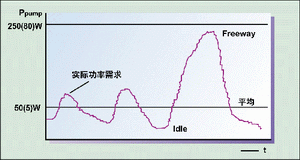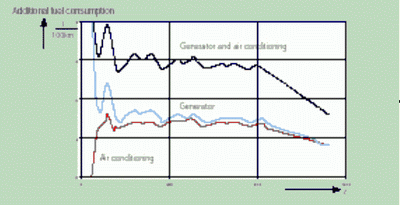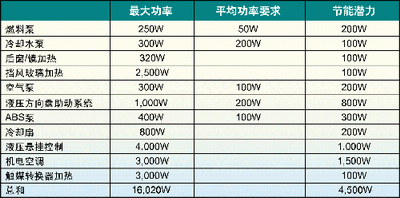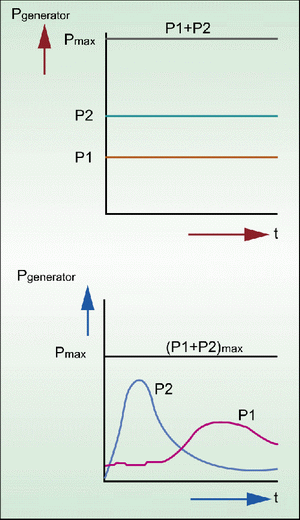Comparisons of semiconductor power switches and relays often focus only on the cost of the switch itself, which is only reasonable for applications that only care about the switching function. And when an application can take advantage of the additional features provided by a smart semiconductor power switch, it should be compared based on the total cost of the system.
This article refers to the address: http://

In calculating the system cost, it is necessary to consider not only the pure functional advantages of the smart semiconductor power switch itself, but also some other benefits it brings, such as a reduction in power requirements and a reduction in the final vehicle fuel consumption. Now, the automotive industry is planning to develop a car that consumes only three liters of gasoline per 100 kilometers (equivalent to 80 miles per gallon), and its lower power budget and resulting cost savings should not be overlooked.
Semiconductor power switches have more features
In automotive applications, the functionality of intelligent power switches can be broadly divided into direct switching functions and additional functions. In addition, the use of semiconductor power switches may also have some alternative effect of reducing the cost of other regions. For example, if a smart power semiconductor switch helps reduce the power consumption of the entire system, then perhaps we can use a smaller power car generator.
As with mechanical switches, relays, or discrete components, a switching function refers to turning a load on or off. For example, the fuel pump can be turned on or off quietly by means of a power semiconductor switch, but in addition, the smart power semiconductor switch provides many additional functions. Replacing a relay with a semiconductor power switch means that the short circuit will never burn the switches, loads, cables and fuses. Infineon Technologies' intelligent power semiconductor switches are designed to protect the system from damage in the event of a short circuit, and of course all inductive components on the feeder. The switches also have an anti-overheating function: they will selectively disconnect the current of either load once the temperature exceeds a certain limit. Whether the temperature rise is caused by excessive current or by the influence of an external heat source is not different for these switches.

Another additional feature offered by smart power semiconductor switches is overvoltage protection. All PROFET and HITFET power semiconductor switches (Figure 1) have dynamic overvoltage (eg, steep load reduction or Schaffner pulse) protection. This feature includes turning off the inductive load. In such cases, the negative voltage peak generated across the switch can be limited to a typical value of -50 or -60V by dynamic Zener clamp. Unlike mechanical switches, it does not require additional components.
Smart power semiconductor switches also provide diagnostics. This feature is especially useful in safety-related applications and system maintenance. Since diagnostic reports can provide data on load interruptions, temporary fault data can be recorded and stored, which greatly simplifies the troubleshooting and location process. Those faults that are difficult for car drivers and maintenance personnel to find (such as lambda probe failure or washer tube heater failure) can now be easily found by this method.
Some semiconductor power switches can be designed to operate at high frequencies, and they can be used to achieve very high switching applications such as brake lights or PWM (Pulse Width Modulation) switches. It is particularly worth mentioning that PWM has created new applications such as dimming lamps, driving analog valves or motor speed control. PWM allows us to easily monitor current and power.

To control large currents, you must first know the magnitude of the current. With the new switches in the PROFET and HITFET families, the current flowing through the switch can be estimated by a sensed signal in a linear mode relative to ground. This allows overload or hidden shorts to be detected and the switch is turned off as soon as they exceed the maximum allowable duration. This method provides protection against overheating and fire without the need for a fuse. In addition, the cross-section of the cable conductor can be perfectly matched to the rated load current, which can greatly reduce the cost of the entire system.
Intelligent load control reduces power requirements
Although all users are happy to take advantage of the additional features offered by power semiconductor switches, there is no consensus on how much cost-effective these features can be. However, its alternative value shows that it is obvious, and this can be shown by unquestionable figures.
These benefits can be demonstrated by the example of an oil pump. Regardless of the speed of the vehicle, the power consumed by the pump and the engine is between 80 and 250 watts. The specific values ​​are related to the design. The engine output is designed to require maximum flow of fuel at full speed. When the engine is idle, excess fuel is returned to the tank through the safety valve, which requires only a few watts of power to operate the pump (Figure 2). Therefore, if the pump can be designed to provide fuel as needed, the average power consumption of the engine will be reduced to between 5 watts and 50 watts, depending on the pump capacity.
Intelligent control can reduce the power consumption of the pump engine by at least 100 watts. In general, the efficiency of a car's power generation is relatively low: for every 100 watts of power, the fuel consumption per 100 kilometers increases by 0.15 liters. Therefore, saving 100 watts of power is equivalent to reducing the weight of the vehicle by 50 kilograms.
Table 1 lists the various automotive loads that can be reduced by intelligent switches. At present, since many of these loads are still mechanically driven by the internal combustion engine, it is difficult to control. The cooling water pump is a device that is easily controlled or regulated by an electric drive. Another suitable application is hydraulic steering wheel control: power is only consumed when the steering wheel needs to be turned. In contrast, today's cars always consume one kilowatt of power even when they are in a straight line.

The numbers given in the table are approximate and obviously vary greatly with the model. However, they clearly show that in a medium-range or luxury car, you can save hundreds of watts in the driving system alone. In these types of vehicles, the fuel consumption can thus be reduced from the current 14 liters per 100 kilometers to approximately 6 liters.
To illustrate the potential for fuel savings, Figure 3 shows the additional fuel consumption of a mid-range vehicle caused by the engine (80A) and the air conditioning system. For ease of testing, the two systems are disconnected from each other so that energy is only provided by the battery. Under these conditions, we use the EUDC cycle to determine fuel consumption. It can be seen that when this cycle starts, that is, when the average speed is low, the fuel consumption is large. As this cycle time increases, at higher speeds, the additional consumption is reduced to approximately 2-3 liters per 100 kilometers. We found that for a generator with an output power defaulting to about 1 kW, the extra consumption per 100 km mentioned above is a very conservative estimate and can only be achieved at the optimal engine speed.
Relying on power management to further reduce system cost
Reducing the electrical demand of a car means that a smaller power engine can be used, the battery can be made smaller, the cable can have a smaller cross section, and the total weight of the car can be reduced.
This can reduce the overall cost of automotive design and manufacturing. Since the power semiconductor switch can be turned off in the event of a short circuit and an overload (for example, when the oil pump is blocked), it is clear that we can reduce the load or pump accordingly. This in turn saves pump design costs while also reducing pump weight.
There are several rules of thumb that can be used to estimate design costs. For every kilogram of weight lost, you can reduce the design cost of a car by 10 to 20 DM (or $3-6 per pound), and you can reduce the cost by 5-10 DM ($3-6) for every watt of power saved.
If all the electrical loads in a car are added together, then the total static power demand will be around a kilowatt. In new high current applications, this number can be increased several times. If all loads can be switched on at the same time, the engine, battery and cable must be designed to withstand this maximum load. However, if the load can be switched on in a certain order and intelligently, then some large current loads do not have to be switched on at the same time, so that the maximum power demand can be drastically reduced. To achieve this, some of the load can be selectively turned off, or the load can be reduced to the minimum required value by PWM (Figure 4).
For example, when the ABS pump is in operation, the heating elements of the rear window can be temporarily turned off. In order to reduce the voltage drop caused by the increase of the peak current, various motors can also be switched according to different delays. This power management method can also be used for car theft. The same method can be used to selectively cut off loads and power lines in the event of an accident, thereby greatly enhancing the safety and theft protection of the entire vehicle.
Smart power semiconductor switches reduce fuel consumption
The use of smart power semiconductor switches in the automotive industry has been a clear trend: not only to achieve some additional functionality, but also to reduce costs. Manufacturing a car that runs 100 kilometers with 3 liters of fuel means that electrical and electromechanical loads must be optimized, especially for electromechanical loads. Here, Infineon's smart power semiconductor switches help the automotive industry achieve solutions that are not only economically viable but also environmentally friendly.
This battery is for replacing Lead-Acid Battery, it has the standard appearance and size as well as capacity, but longer cycle life and high energy and good charge and discharge performance.
Capacity:100AH/150AH/180AH/200AH/250AH.
Voltage:12.8V, cycle life is more than 2000 times, also can customize the capacity.
Rechargeable Lithium Battery,Lithium Polymer Battery,Rechargeable Lithium Ion Batteries,Rechargeable Lithium-Ion Batteries,12v 200Ah Powerful Bank,Home Storage Rechargeable Battery
Shenzhen Enershare Technology Co.,Ltd , https://www.enersharepower.com